 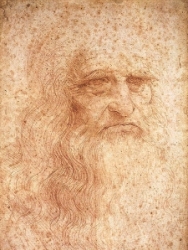 Leonardo da Vinci was born in 1452 in Italy. He was a painter, draftsman, sculptor, architect, and engineer, whose skill, artistry and intelligence, perhaps more than that of any other human, epitomized the Renaissance artist and scientist. His paintings of The Last Supper and Mona Lisa are among the most widely influential paintings of the Renaissance, and perhaps of all time. His notebooks reveal scientific inquiry and a mechanical inventiveness that were centuries ahead of their time.
Leonardo da Vinci was born in 1452 in Italy. He was a painter, draftsman, sculptor, architect, and engineer, whose skill, artistry and intelligence, perhaps more than that of any other human, epitomized the Renaissance artist and scientist. His paintings of The Last Supper and Mona Lisa are among the most widely influential paintings of the Renaissance, and perhaps of all time. His notebooks reveal scientific inquiry and a mechanical inventiveness that were centuries ahead of their time.He had an unlimited desire for knowledge, which guided his thinking and behaviour. An artist by training, he applied his creativity in many other areas, and went even beyond that, using his superb intellect, unusual powers of observation, and mastery of the art of drawing to study nature itself, allowing his pursuits of both art and science to flourish. 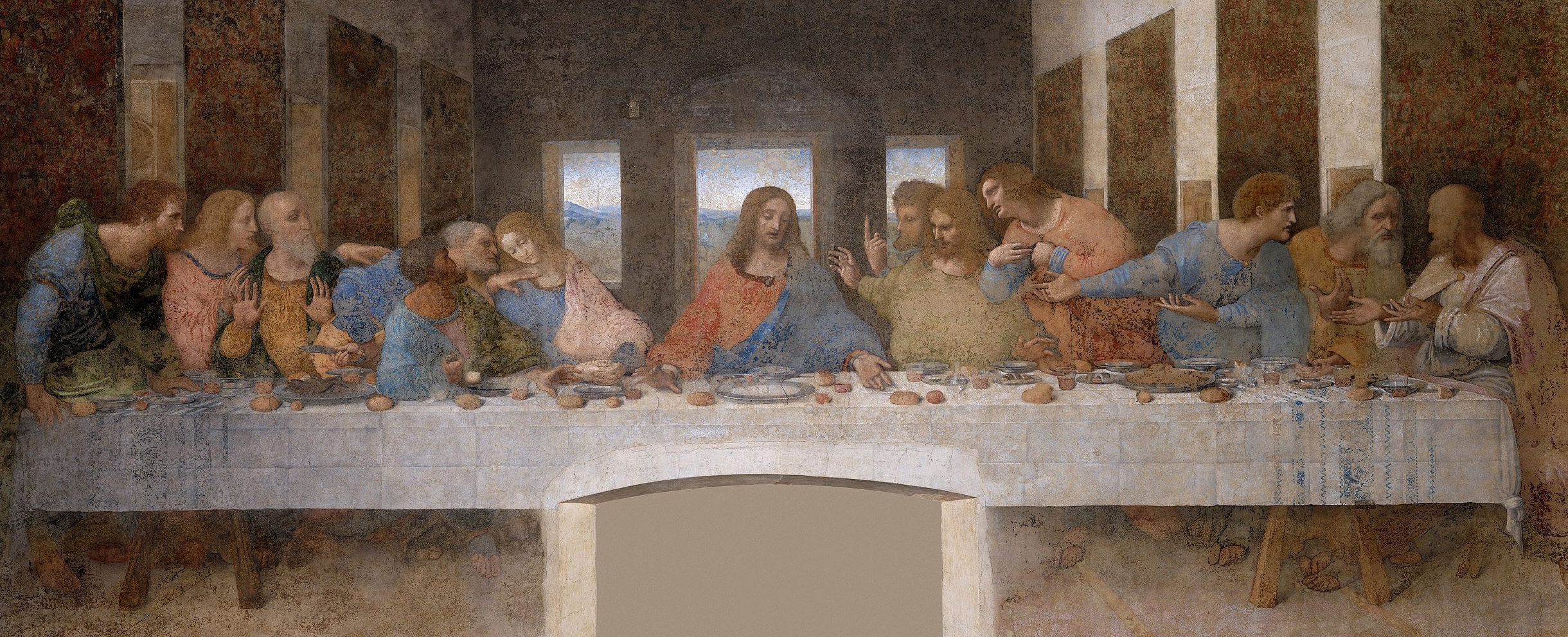 The Last Supper. Click on the image to see an enlarged version; click again to shrink it. Leonardo’s Last Supper is one of the most famous paintings in the world. The composition of the scene of the twelve disciples surrounding Jesus is masterful; the power of the painting comes from the striking contrast in the attitudes of the disciples as compared to Christ. Leonardo portrayed a moment of tension when, as they share Passover, Jesus says, “One of you will betray me.” The disciples are agitated, but Jesus sits alone, serene, aware of what is to come. See Matthew 26:17-30 In the perfect yet simple arrangement of the individuals, highlighted by gesture, facial expressions, and poses, Leonardo's painting has remained a model of its kind; great masters such as Rubens and Rembrandt were influenced by it and by the painting’s narrative quality. Yet this giant wall painting was not always so appreciated. Notice the doorway, since plastered over, that was cut into the wall, obliterating Jesus' feet. 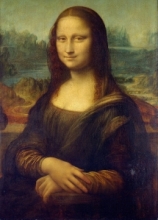 The Mona Lisa is without a doubt the most famous painting in the world. The Mona Lisa's enigmatic smile has made the portrait famous. It was created by Leonardo Da Vinci using oil paint on wood, and measures just 77 x 53 cm. It is currently on display at the Louvre Museum in Paris, France.
The Mona Lisa is without a doubt the most famous painting in the world. The Mona Lisa's enigmatic smile has made the portrait famous. It was created by Leonardo Da Vinci using oil paint on wood, and measures just 77 x 53 cm. It is currently on display at the Louvre Museum in Paris, France.Da Vinci loved the portrait so much that he never gave it to the person who commissioned it. In fact, he carried it with him for years after it was completed. There is also some dispute about the real subject of the painting. A few art historians believe that the portrait may actually have been a composite of several sketches that Leonardo had already made, possibly even of a male model. In the years after 1490, Leonardo bacame a writer, where he expressed the results of his intense scientific and engineering curiosity. There were four main themes that were to occupy him off and on for the rest of his life: treatises on painting, architecture, mechanics, and human anatomy. His geophysical, botanical, hydrological, and aerological researches also began in this period. He preferred not to speculate; rather, he valued experience gained first hand. He recorded everything in a series of notebooks. He would first make quick sketches of his observations on loose sheets or on tiny paper pads he kept in his belt; then he would arrange them according to theme and enter them in order in a notebook. Leonardo’s notebooks add up to thousands of closely written pages wonderfully illustrated with numerous sketches, the largest literary legacy any painter or scientist of that era has ever left behind. 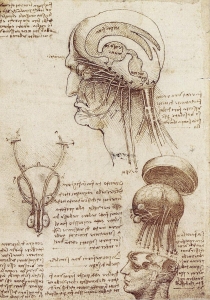
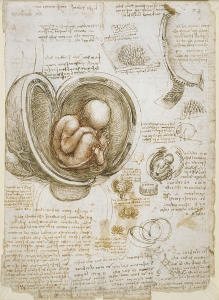
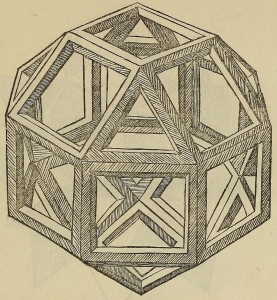 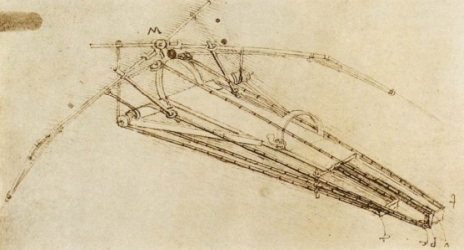 Da Vinci studied and designed war instruments such as tanks, catapults, submarines, machine guns, and other weapons. He also focused on the mechanics of levers and gears, cranes, hydraulics, ball bearings, bicycles, and flying machines. He displayed civil engineering talents as well, with geometry studies and architectural designs of domed churches, fortresses, and canals. He detailed plans for a three-wheeled, wind-up, self-moving 'auto-mobile' that has been considered the first 'robot.' Many of his designs could not be built in his era because the materials and manufacturing tools did not yet exist. Leonardo da Vinci died on May 2, 1519. |